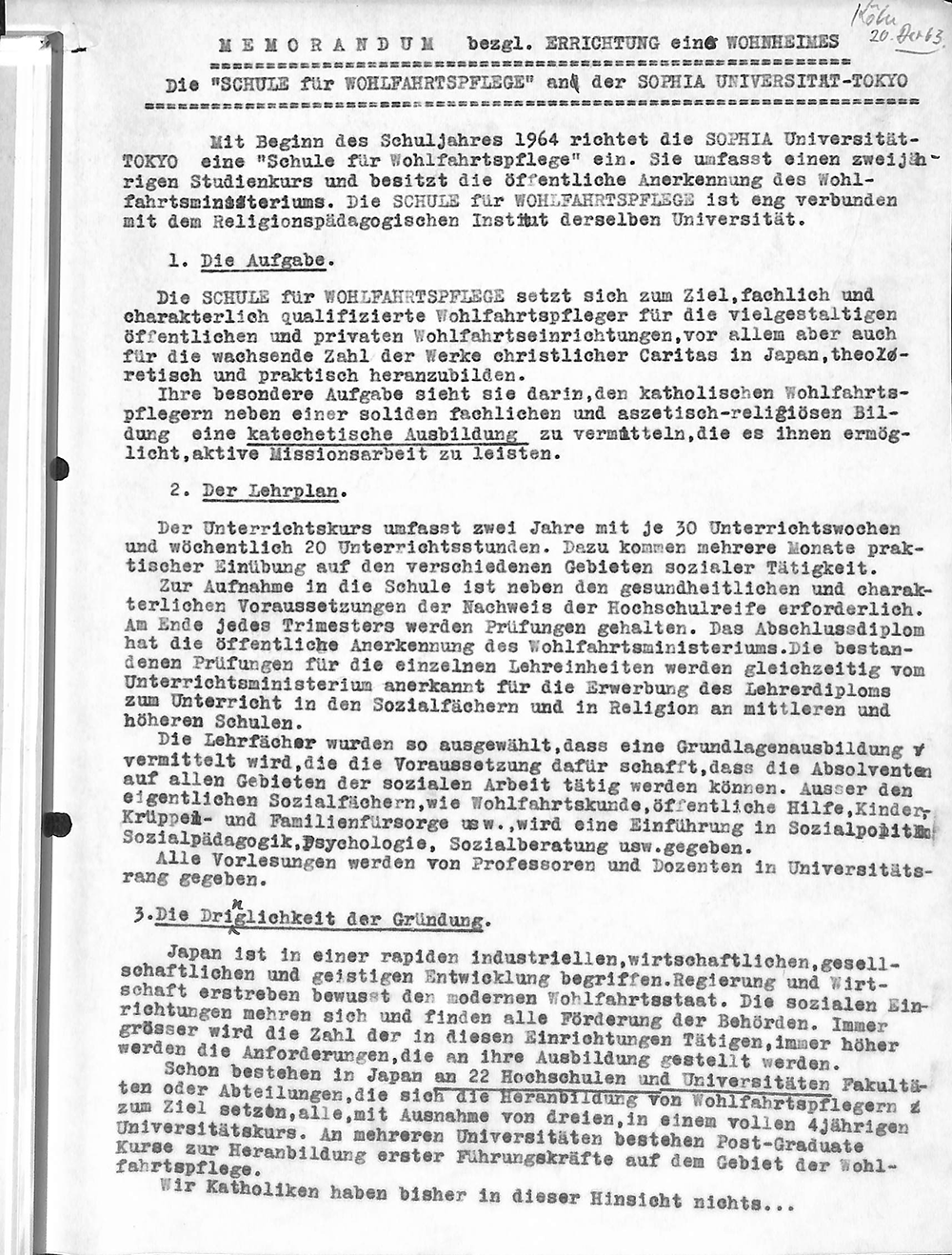Chapter 2.
Establishment of the Sophia School of Social Welfare
Since its opening in 1964, the school popularly called Shasen has developed activities based on Christian humanism. These activities have been supported by various distinctive educational programs to produce professional social workers, backed by the spirit of "for Others, with Others".
This chapter looks back on the process that led to the founding of the Shasen, based on the valuable documents left by Father Peter Heidrich, who was instrumental in establishing the school.
Section 1 "Where There is a Will, There is a Way"-Father Heidrich and the Budding of the Shasen Concept
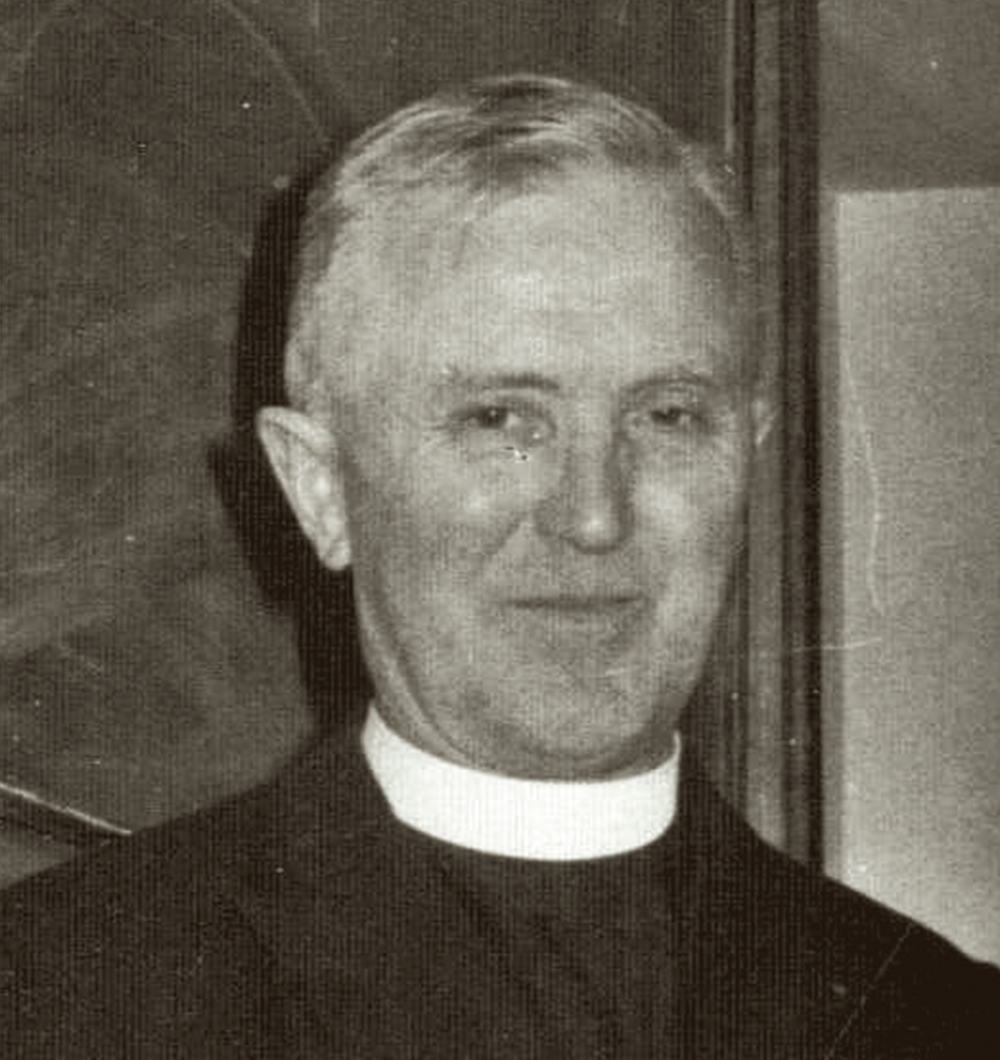 Document Number:Sophia University, One Hundred Years_P.146_2
Document Number:Sophia University, One Hundred Years_P.146_2Father Peter Heidrich, who was instrumental in establishing Shasen, was born in Germany in 1901, joined the Jesuits in 1922, and came to Japan in 1933. After working in Catholic churches in Yamaguchi and Okayama, he moved to Tokyo in 1953 and taught social ethics and religious studies at the University until 1971, when he became head of the extension course in theology.
According to "Sophia University: One Hundred Years" (2013, Sophia School Corporation), Father Heidrich had the opportunity to hear about the current situation of social welfare facility employees from sisters who were attending the course and realized the need for education that links social welfare and theology. This idea is also strongly expressed in the concept of founding the school, which will be introduced in the next section. In addition, when he was assigned to the university, Father lived in a Settlement in Machiya, Arakawa-ku, Tokyo, and it is said that this experience was the first step in his involvement with social welfare.
Many of the documents presented in this chapter were carefully preserved by Father Heidrich. Document 9 is a historical document that was discovered by Father Klaus Luhmer, Chancellor of the Sophia School Corporation, after his death in 1990. The following is written on the cover of the document.
"At the time of its founding, it was affiliated with the Department of Social Welfare and the Sophia Special School of Social Welfare in the Sophia School Corporation.
The documents were found in the room of Fr. Heidrich, who died on
November 9, 1990.
1990.11.13 K. Luhmer."
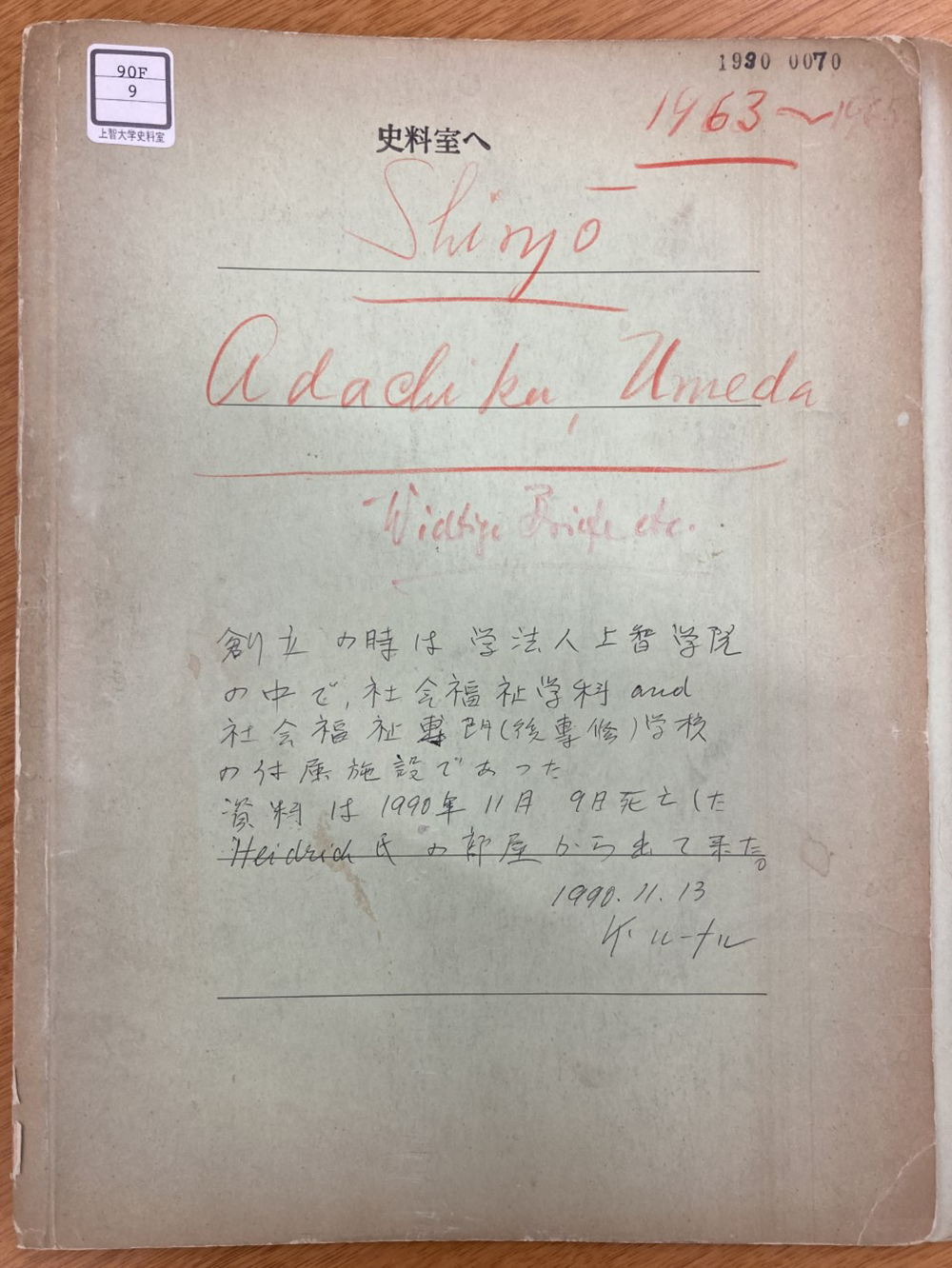 Document Number:90F-9
Document Number:90F-9Father Heidrich aimed to found an educational institution that linked social welfare and theology, and began preparing for this around 1963. Document 10 is a German document in which Father Heidrich describes his vision of a vocational school for social welfare.
In these documents, he expresses a sense of crisis, saying that despite the growing demand for social welfare, "We Catholics have so far done nothing in this area...". He also argues that the establishment of a "Sophia University Special Course in Social Welfare" to train professionals in social welfare will have a positive effect on missionary work.
Thus, Father Heidrich’s goal was to establish an educational institution to foster professionals who would develop social welfare based on the Jesuit spirit of service, while relating it to the current state of Catholicism.
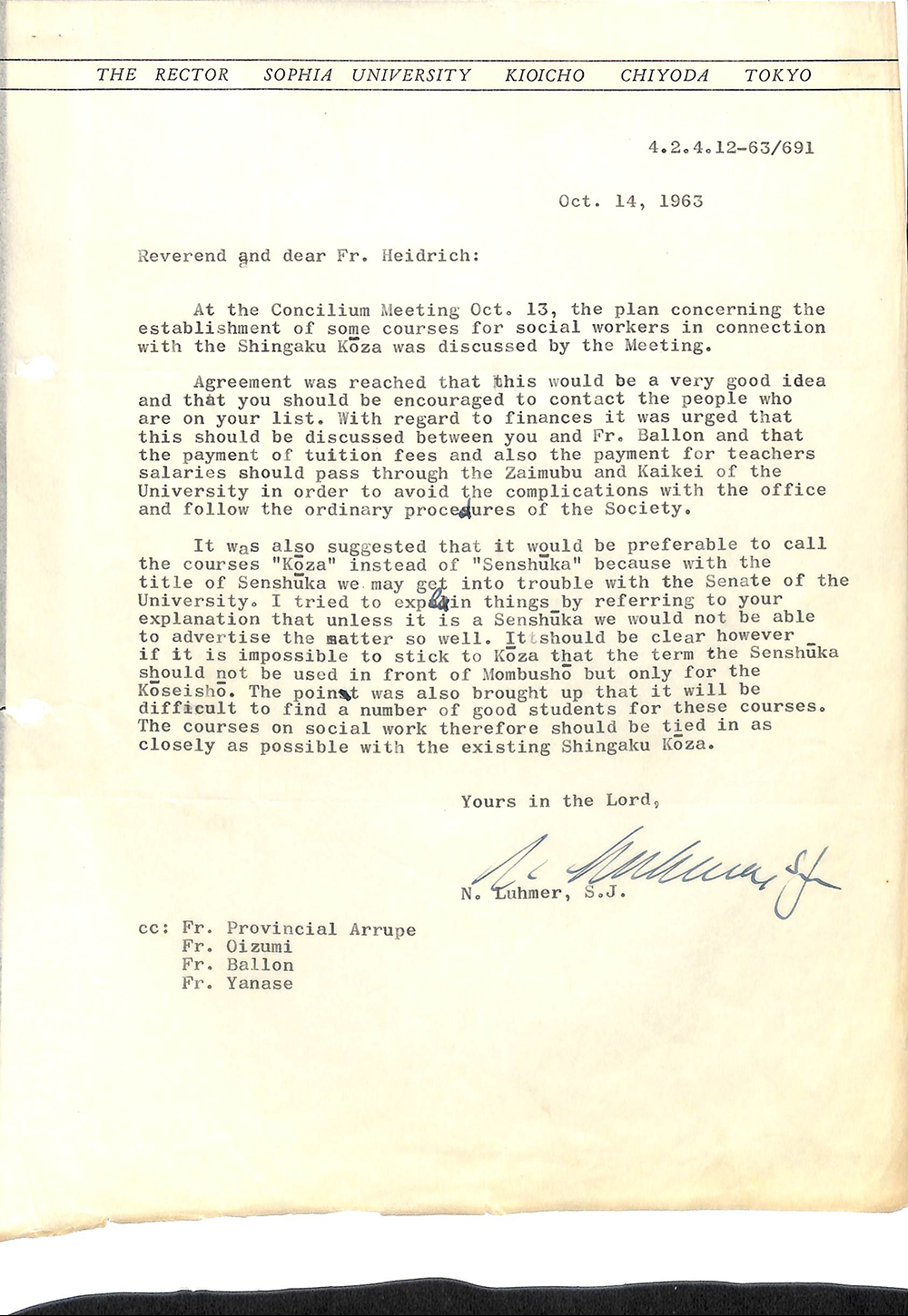 Document Number:90F-9_2
Document Number:90F-9_2Document 11 is a letter from Father Klaus Luhmer, then Chancellor of Sophia School Corporation, to Father Heidrich, expressing his opinion on the concept of the Sophia University Special Course in Social Welfare.
In it, Father Luhmer states that this is a very good concept and that the idea is to relate it as closely as possible to the content of the extension course, which will help to fill the student capacity.
On the other hand, as the name “Sophia University Special Course in Social Welfare” is expected to be controversial in all concerned areas, we propose that it simply be called “Sophia Special School of Social Welfare”.
The book commemorating the closing of the school, "58 Years of Sophia School of Social Welfare." (2022, Sophia School Corporation), describes the road to the opening of the school as a "lonely battle" (p. 22) for Father Heidrich. Father Heidrich had to deal with these opinions within the University while working hard to coordinate with all parties concerned.
Section 2: Opening of the Sophia University Special Course in Social Welfare and Development of Facilities
In December 1963, the Sophia University Special Course in Social Welfare was accredited by the then Ministry of Health and Welfare as a "facility to train specialists in social welfare” and began offering courses in April 1964. At that time, the classes were held in the same classrooms on days when the extension program in theology classes were not in session.
The Sophia University Special Course in Social Welfare also included a curriculum for the training of Day-care Teachers. The day-care center attached to Sophia University, "Umeda Children's House," served as a practical training facility for students who wished to become Day-care Teachers.
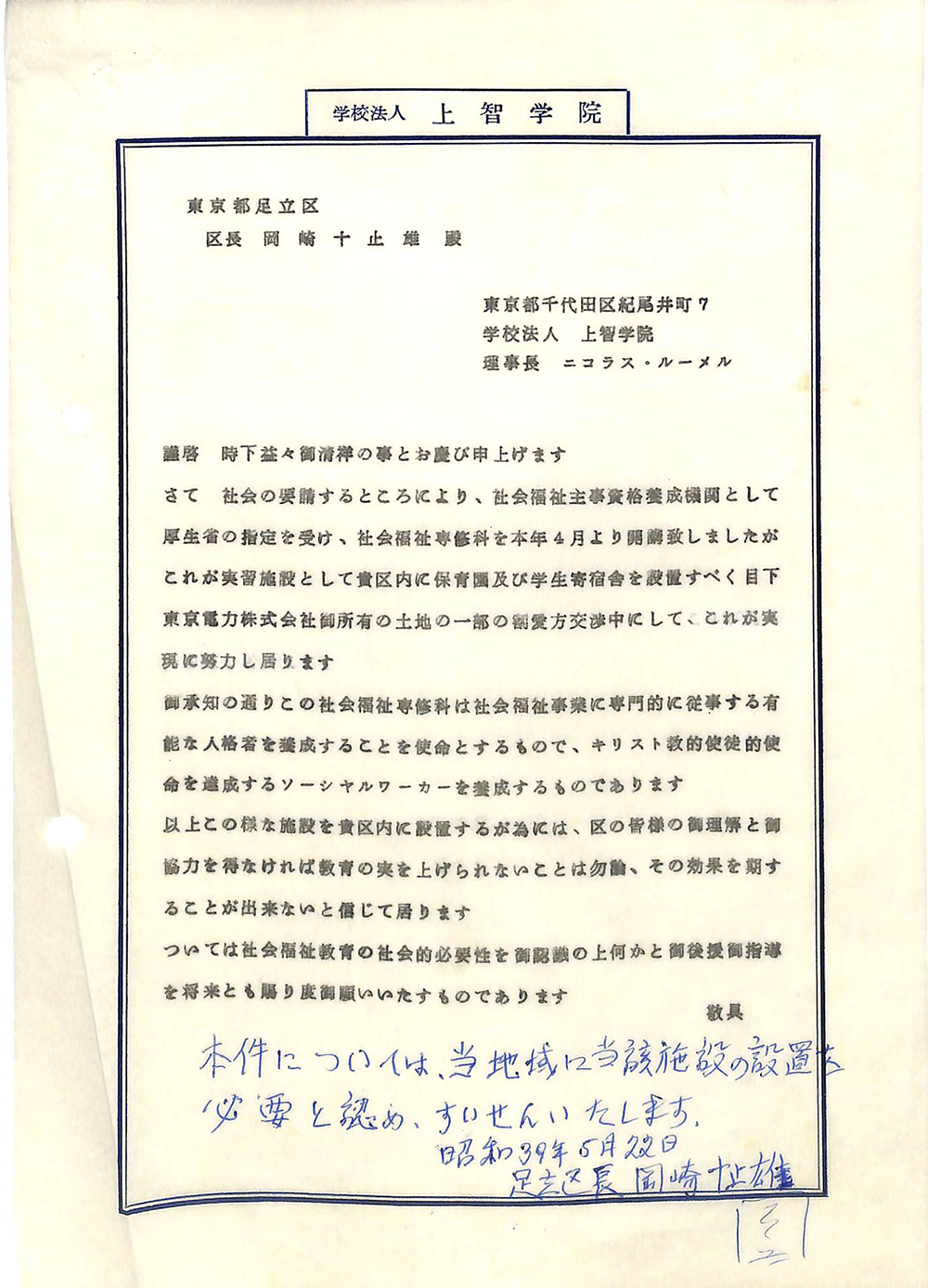 Document Number:90F-9_15
Document Number:90F-9_15
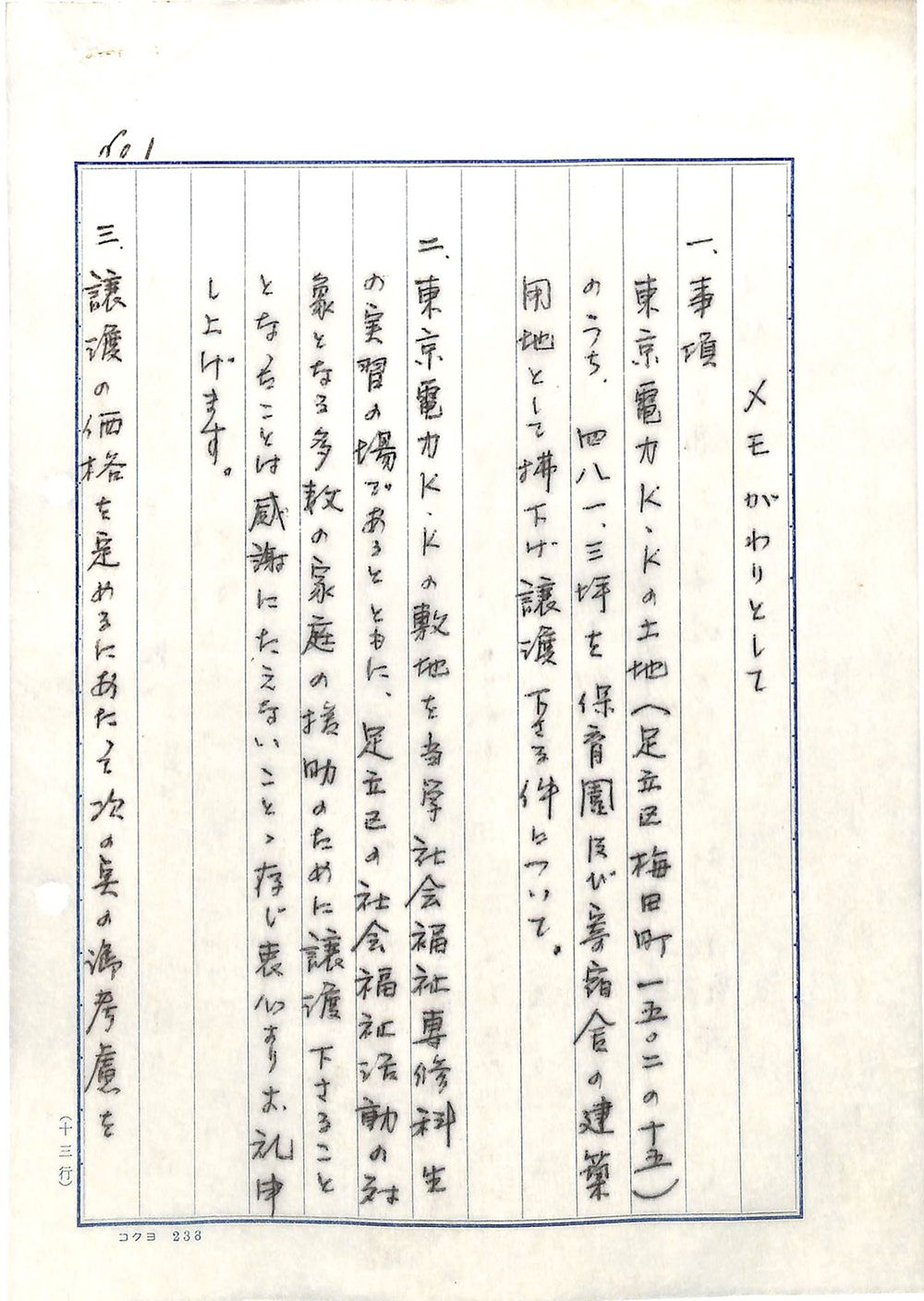 Document Number:90F-9_29
Document Number:90F-9_29
Father Heidrich wanted to build a training facility and dormitory for students of the Sophia University Special Course in Social Welfare. To this end, he approached the Diocese of Cologne, Germany, and succeeded in obtaining a donation. Then, in 1965, he set up the Umeda Children's House in Umeda, Adachi-ku (a 10-minute walk from Umejima Station on the Tobu Isezaki Line) on land owned by TEPCO. Document 12 is an application for approval of the establishment of the facility to the mayor of Adachi Ward, which states that the purpose of establishing the facility is to "train social workers to fulfill a Christian apostolic mission". Document 13 is a memorandum of understanding with TEPCO.
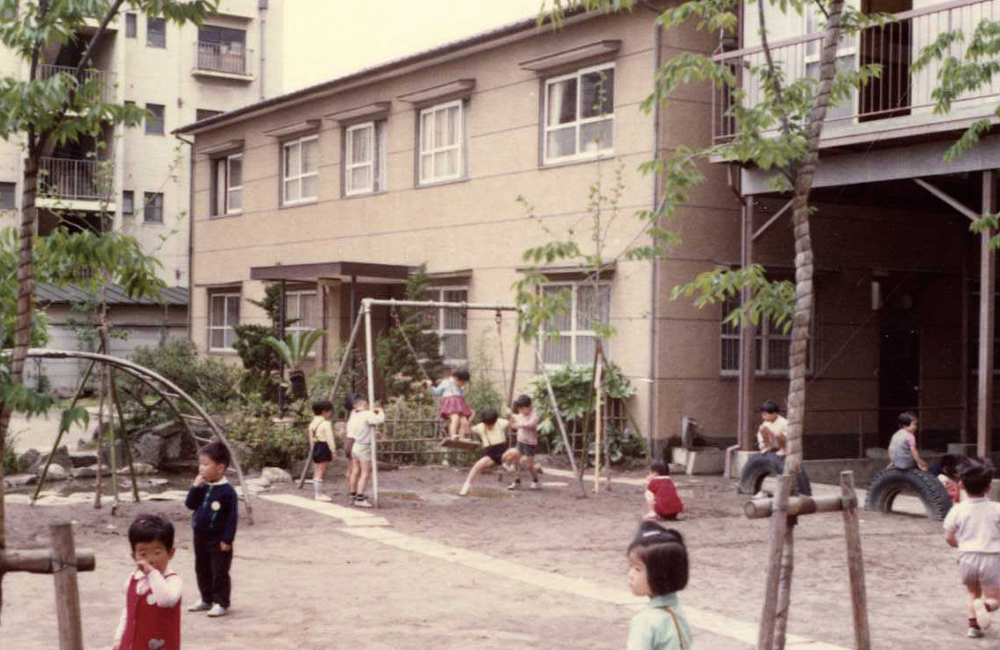 Document Number:Sophia University, One Hundred Years_P.146_3
Document Number:Sophia University, One Hundred Years_P.146_3Sophia Juku, a dormitory for female students attending the Sophia University Special Course in Social Welfare, was founded next to the Umeda Children's House. It was also used as a dormitory for female staff who later found employment here. In this way, this place would contribute to the development of a diverse professional workforce at Shasen.
Note that the Children's House was the first in Japan to adopt Italian Montessori education, and it has attracted nationwide attention.
Section 3: A place of learning for a diverse group of students
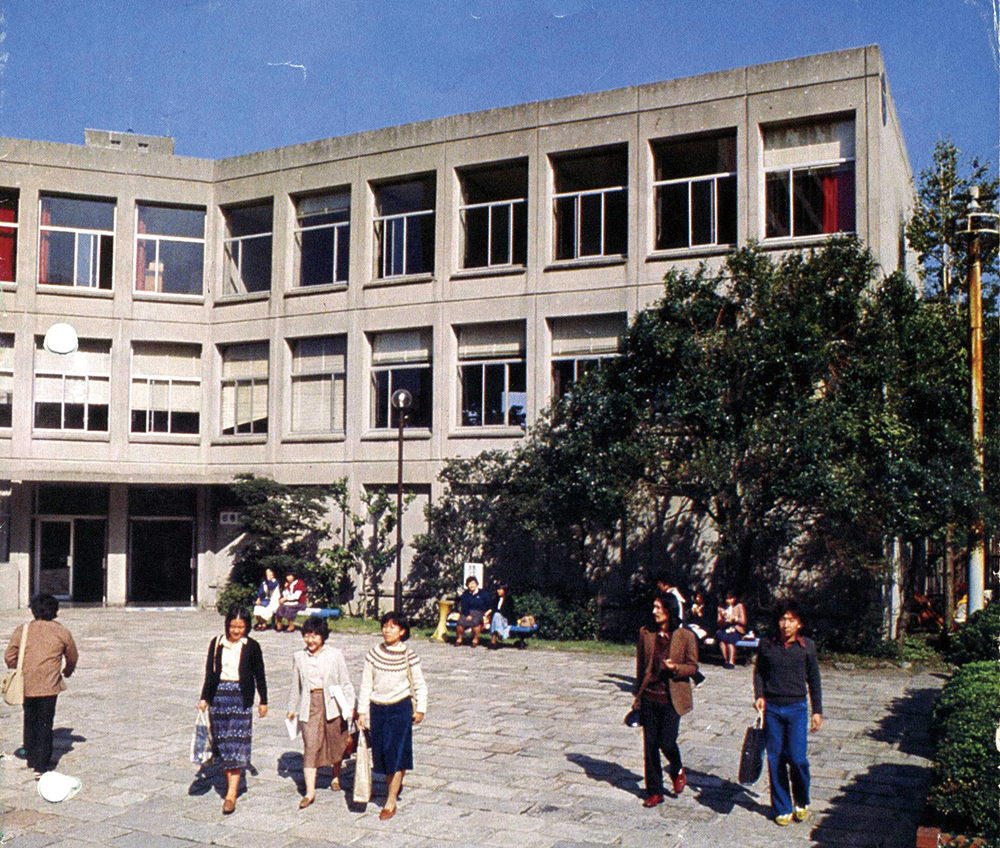 Document Number:1980 "School Guide"
Document Number:1980 "School Guide"In 1966, the Sophia University Special Course in Social Welfare was accredited by the Tokyo Metropolitan Government as a vocational school and changed its name to the Sophia Special School of Social Welfare, thus becoming independent from the University.
Later, in October 1976, when the government revised the School Education Law and created the official category of “specialilzed vocational schools”, the Sophia Special School of Social Welfare was again accredited as one such school by the Tokyo Metropolitan Government. In response, the school’s name was changed to the Sophia School of Social Welfare" as a special training school offering specialized courses.
Until its closure in 2022, Shasen continued to foster a large number of excellent professionals. The background of the school can be inferred from the following words of its graduates.
"I wanted to study social systems with people who have experience in society." "Although we have different motivations for enrolling, different backgrounds, and different learning styles, I feel as if we are all resonating with each other here."
These are the words of a graduate from Sophia School of Social Welfare in its "58 Years of Sophia School of Social Welfare.".
Some entered the school after graduating from high school and were exposed to welfare for the first time, others had extensive experience in the field, some had been housewives for a long time, and some were international students... Students from various backgrounds gathered and worked hard together, which fostered a unique school culture.
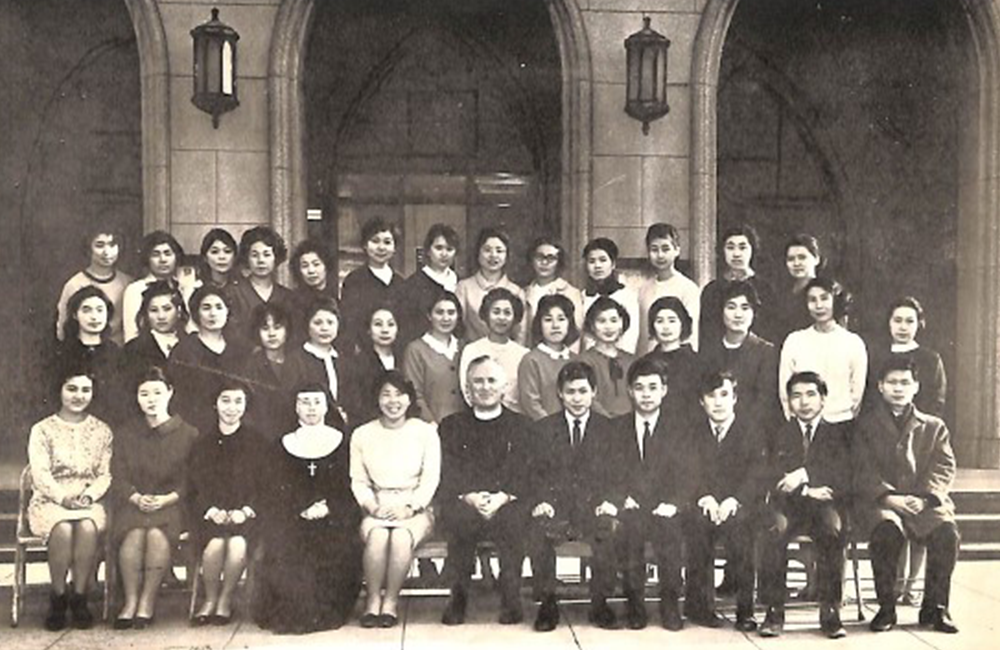 Document Number:90F-5_16
Document Number:90F-5_16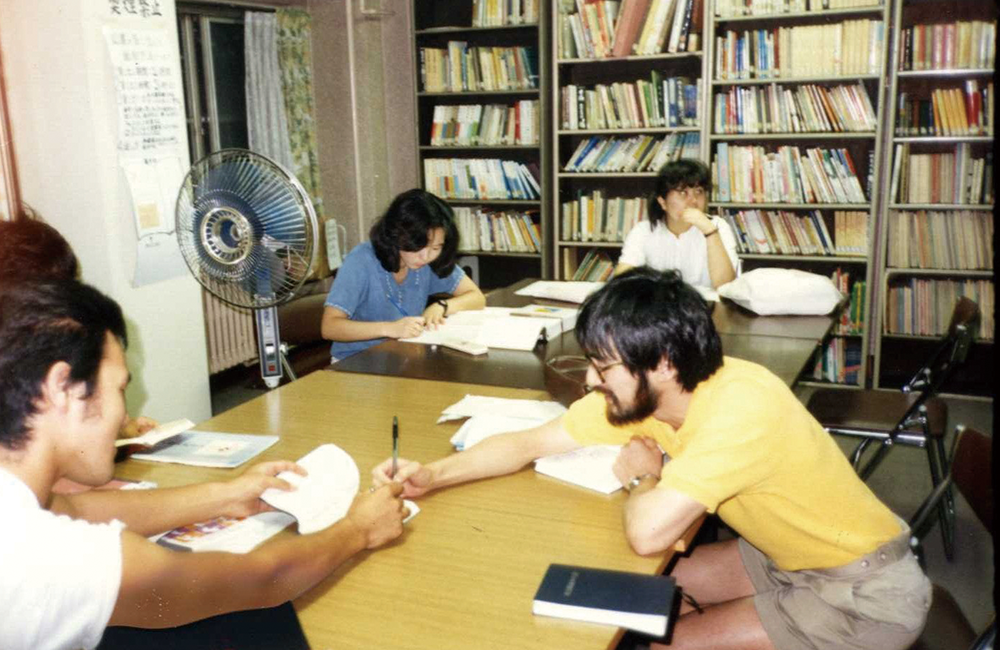 Document Number:Sophia University, One Hundred Years_P.159_1
Document Number:Sophia University, One Hundred Years_P.159_1
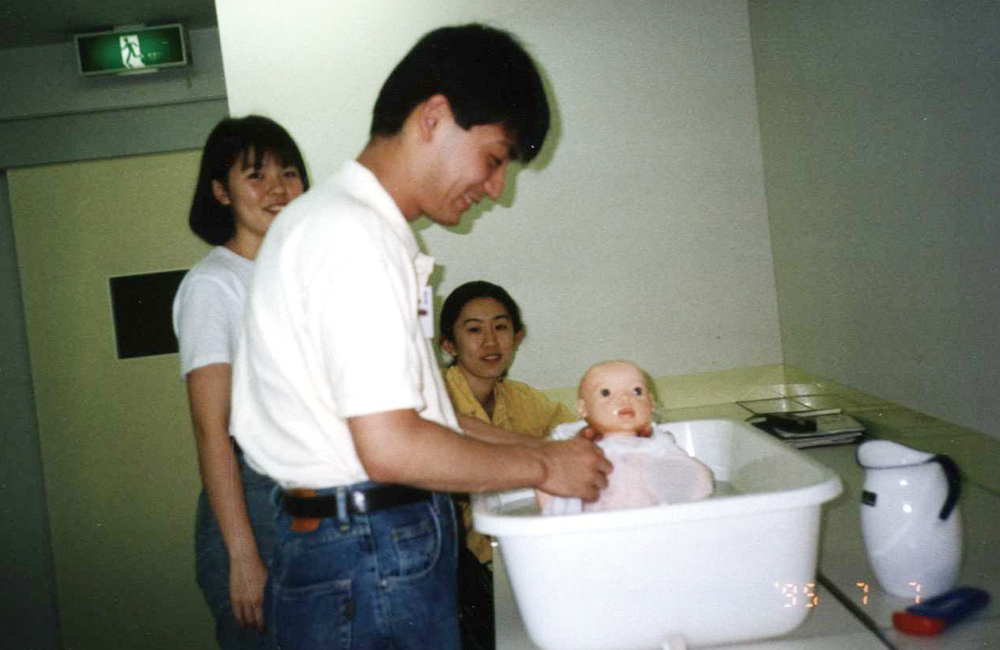 Document Number:Sophia University, One Hundred Years_P.158_1
Document Number:Sophia University, One Hundred Years_P.158_1
The classes at the Sophia School of Social Welfare were held in the evening to accommodate students who had jobs. Under these circumstances, many students spent their free time and the little time they had after school in welfare-related study groups.
Document 19 are collections of Sophia School of Social Welfare graduates' writings, "Fukushi no Hiroba" (Welfare Plaza), and a booklet of their activities at welfare facilities. These were distributed not only on campus but also at the school festival. The accumulation of such self-improvement contributed to the development of students and professionals who encompassed the spirit of service.
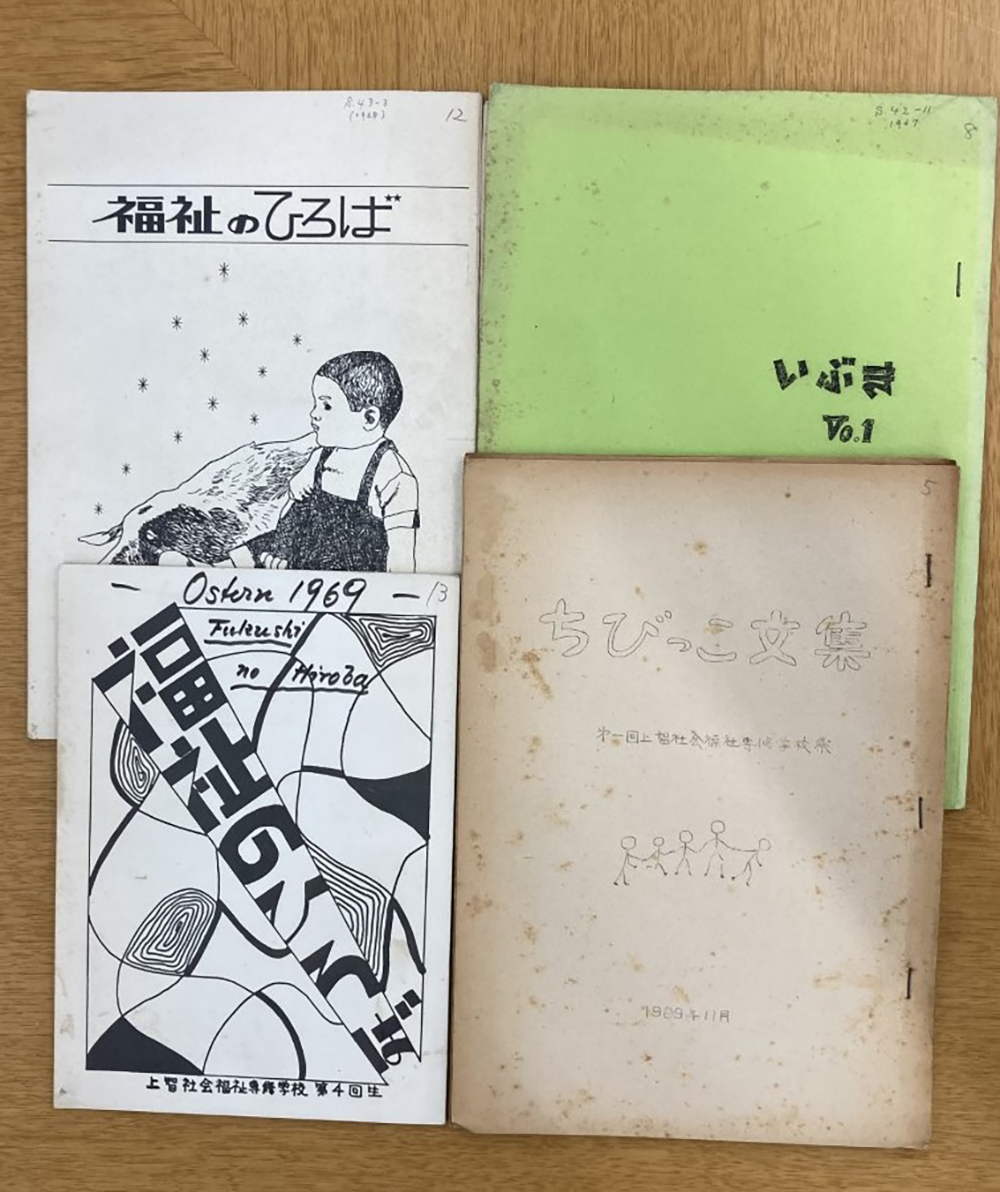 Document Number:90F-5_5・8・12・13
Document Number:90F-5_5・8・12・13Section 4 "Men for Others" and the Spirit of Shasen
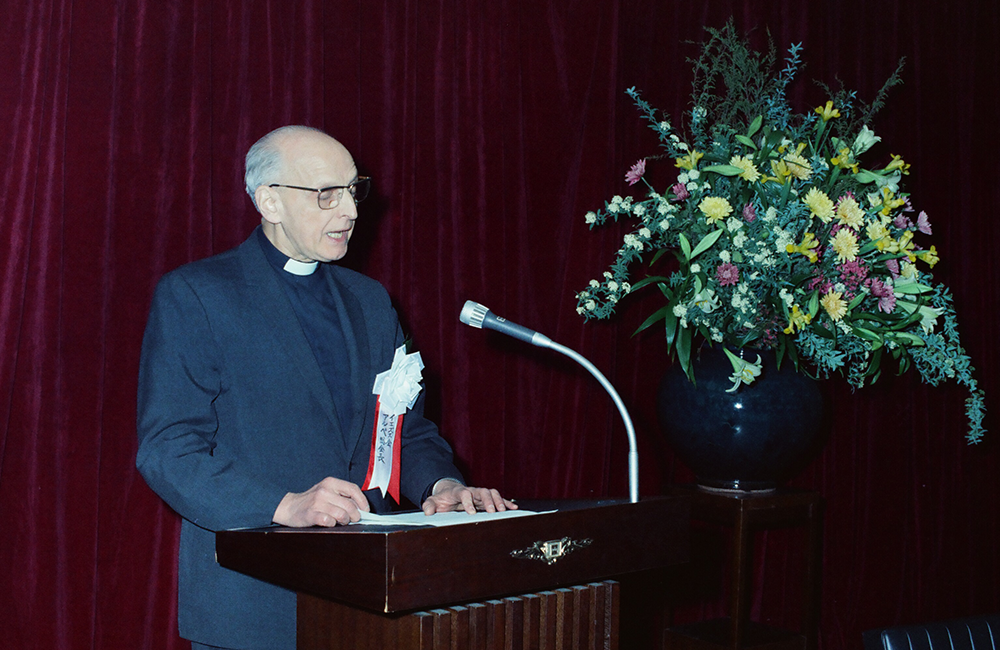 Document Number:nega2-4604M_000008
Document Number:nega2-4604M_000008"Men for Others."
These words were spoken by Father Pedro Arrupe, 28th Superior General of the Society of Jesus, at the 1973 International Congress of Jesuit Alumni of Europe gathered in Valencia, Spain.
In response to the question, "What kind of man is needed and wanted in the Church and in the world today? In a word, it is ‘Men for Others’. " This is one answer to the question that has been debated since the Vatican Council, namely, what attitude should the Catholic Church take toward the increasingly diverse problems of society? The Shasen has adopted this phrase as the philosophy of its own educational practice.
Father Arrupe was born in Spain in 1907, joined the Jesuits in 1927, came to Japan in 1938, and while serving as rector of the Jesuit community of Nagatsuka (Hiroshima Prefecture), was exposed to radiation on August 6, 1945, but used his medical training to help the injured. Later, as Superior General of the Japanese Province of the Society of Jesus and Superior General of the Society of Jesus, he also worked to establish Hiroshima Gakuin Junior and Senior High Schools (Hiroshima, Japan) and to expand the facilities of Sophia University.
